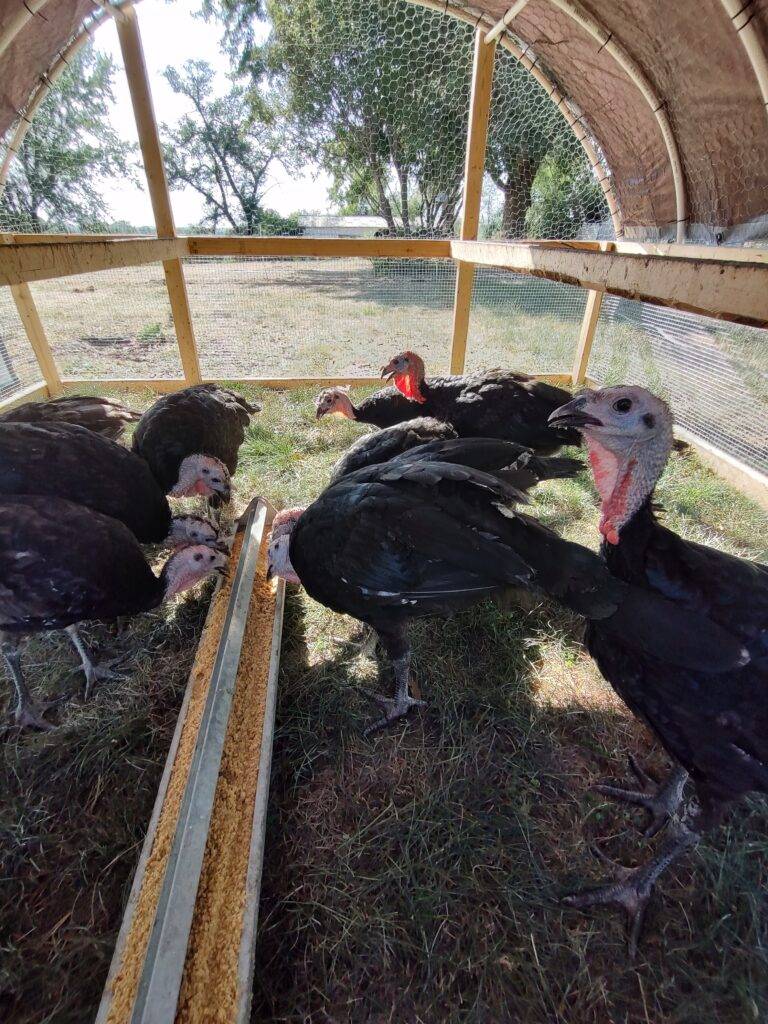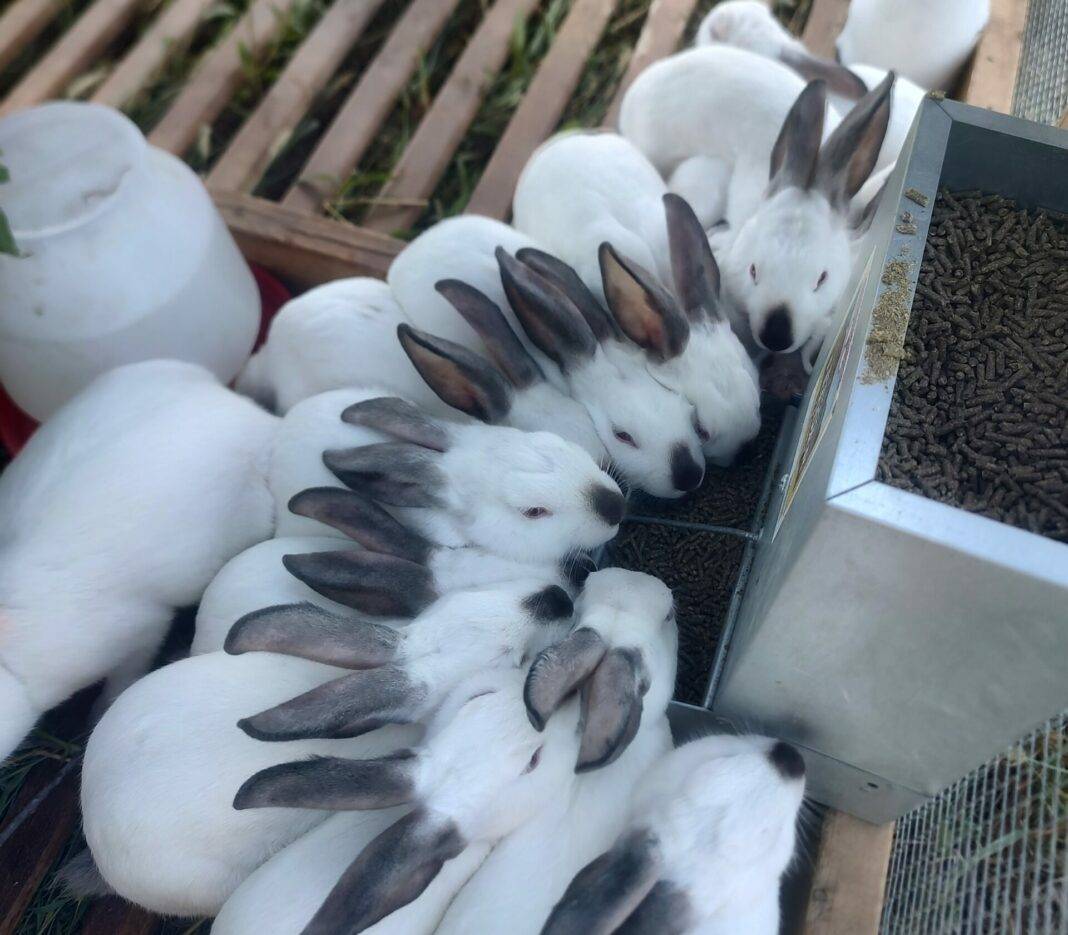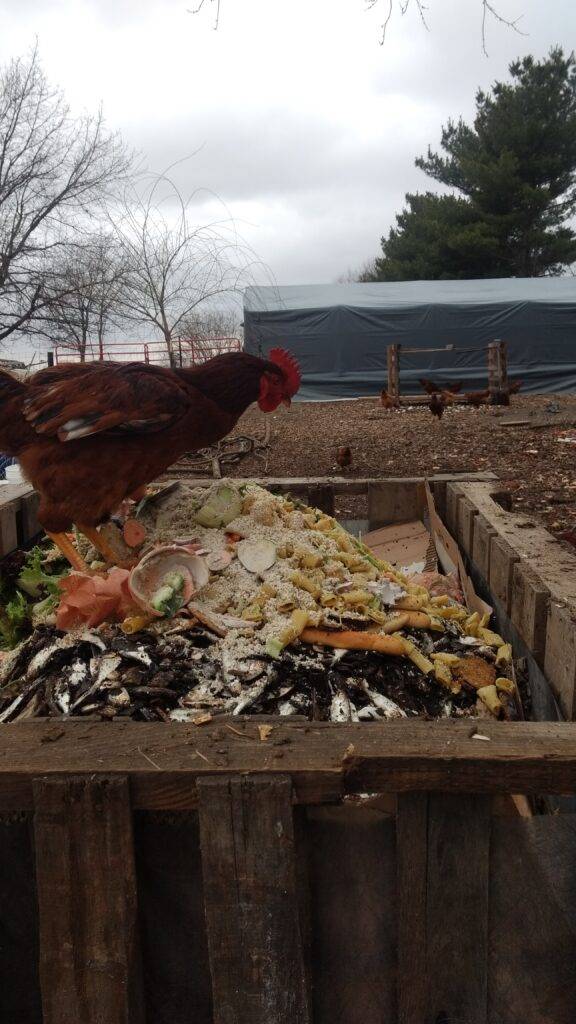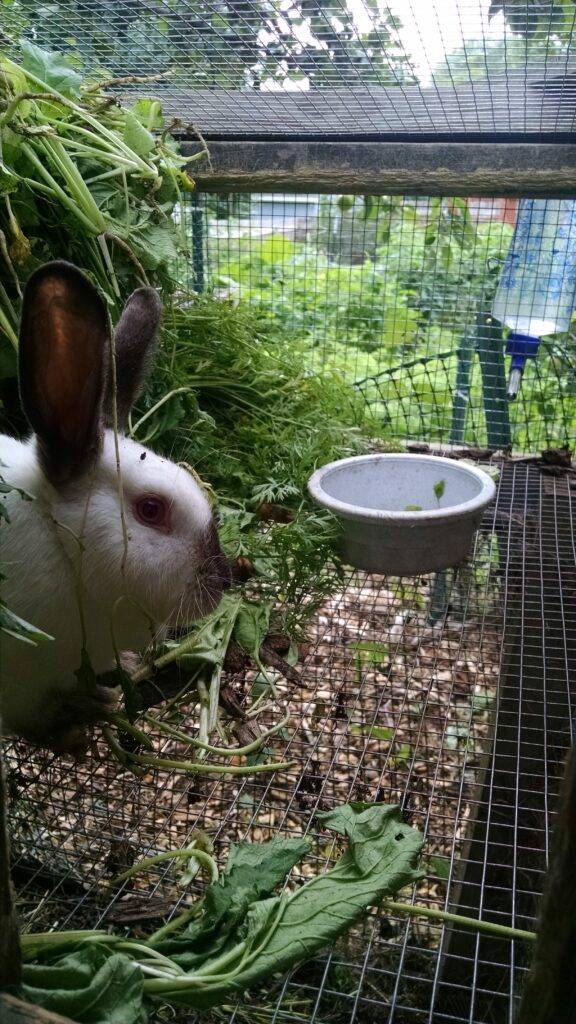An Iowa farmer traces his path from dreamer to do-er on a farm where nothing goes to waste.
The Iowa Farm Companion will be a regular feature, written by Joe Villines, who operates Halfacre Farms in Iowa with his wife Lydia. The two are dedicated to living lightly on the planet and we’re delighted their sharing their sustainable practices — and great photos — with Bluedot readers.
Halfacre Farms began in the fall of 2015, named for the half acre of land my wife, Lydia, and I had rented for a dollar. On this small plot, we developed a scalable, sustainable soil building plan using small animals, market gardens, and cover crops. We use half of the land for intensive market gardening, while the other half is in soil building, using cover crops and poultry kept in open-bottomed pasture pens.
That first fall, inspired by Joel Salatin (featured in the documentary Food, Inc.), I sought help from the Iowa State University Extension Service and used my grocery budget to build my first ten- by twelve-foot pastured poultry pen. I ordered 100 Cornish Cross broiler chickens and began advertising our farm and products on Craigslist and Facebook. We planned to process the birds on-site, using borrowed equipment and help from the neighbors. I had no idea whether our farm was a viable business; I figured that if the birds didn’t sell, I could walk away and at least have a good supply of chicken to eat. But thanks to our diligent advertising, all of the birds had sold by two weeks before processing day, and we were off to a great start.
Before launching Halfacre Farms, I had been farming my thirty- by thirty-foot backyard in town for nearly a decade, producing a large quantity of food. Ducks and rabbits supplied protein for us and compost for the vegetable gardens and apple trees.
In 2014, I approached a local farmer, lawyer, and advisor at the Drake University Agricultural Law Center about my magical, wonderful plan to own an orchard and all the wonderful things that came with it. He not so graciously slapped the stars from my eyes. Bucolic, he told me, is what farming is not. Making a living solely from farming, he said, was a fever dream; most farmers have off-farm jobs. So for my first few years on Halfacre Farms, I kept my soul-killing day job, using farming as therapy.
Our first year taught us how quickly a hundred chickens in an intensive grazing and movement plan could improve soils that previously could barely support lawn grasses. By the spring of 2016, we had revived enough soil that moles began invading, which was actually a great sign: it meant that the earthworm population had grown significantly from our soil building efforts (and a soil sample showed as much). While the broilers were grazed in an adjacent paddock, we broke ground on a quarter-acre garden plot. Because it was a drought year, we covered the entire area with four inches of wood chips (acquired for free from a local tree service), and the results were astounding: in two months, the soil underneath had enough moisture for planting and was full of earthworms. My trusty drill-mounted bulb auger cut through the replenished soil easily. By comparison, just a few feet over, where we hadn’t used wood chips, digging was difficult due to the drought, lack of organic matter, and the soil’s heavy clay content.
Buoyed by success and with twelve months of savings in the bank, I quit my day job and focused on my farm business. By the fall of 2016, we were raising 400 broilers a month and had expanded into three acres of neighboring land rented for $200 a month. We also paid the neighbor’s water bill so we could access their water and not have to keep hauling it from home. By 2017, the market garden was thoroughly enriched with compost from our small rabbitry and brooder waste, and we had a laying flock of 300 hens. Demand for our meat, eggs, and vegetables remained steady. Eventually, even with the new acreage, we realized that we’d outgrown our space. In 2022, Lydia and I took the next step and purchased a 1900s-era, ten-acre farm in Indianola, IA.
On our new farm we can finally build permanent infrastructure and work on improving our soil without concern for whether or not our lease will be renewed or rents raised. We have two acres of vegetables and flowers in production, with the plan to add fruit orchards and move pastures into an area of mixed prairie and trees for a silvopasture arrangement which will be managed by a timed intensive grazing plan.

We raise and keep breeding stock for three breeds of heritage chickens for our laying flock, three breeds of duck for eggs, geese primarily for flock protection, and turkeys for the holidays. During the COVID-19 lockdowns, shipping new chicks by mail became unreliable through the post office. The threat of Avian Influenza caused many hatcheries to halt hatching altogether, and hatchery prices soared to more than double the pre-pandemic prices. Maintaining our own breeding flock keeps our supply chain local and predictable. Since our customers expect the kind of chicken they buy at the store, we still raise Cornish Cross, but we’re working on developing our own American Bresse flock for meat production. Bresse are a heritage breed with large, meaty bodies and smaller bone structure. They may produce a better, more sustainable source of chicken — and unlike Cornish Cross chickens, they like to forage and move around.
Everything we have is considered for its highest and best use in both life and death; nothing goes to waste. Offal, manure, culls, and unhatched eggs go into a compost pile for a long composting process. We've had great success introducing red worms to the piles and are now finding them all over the property where there is organic matter to be broken down.
Getting to where we are now required a great deal of planning and research. I read just about everything Joel Salatin has written, which led me to other authors who focus on soil as the basis for animal and plant health. When I read a book I found helpful, I looked up the authors the book referenced and read them, too. I spent countless hours on YouTube and visiting other farms in person, seeing how others do it. We employ practices inspired by Allan Savory and Gabe Brown, who, though they couldn't be farther apart climate-wise, both practice perennial, pasture-based agriculture with short-term intensive grazing and cover crops.
We’re always asking ‘The Five Whys’ — a problem-solving strategy developed by the Toyota Motor Corporation. By asking the same question five times and coming up with five answers, this methodology helps identify the root causes of a problem and can lead to solutions. In our experience, the fifth answer we come up with is almost always a free or extremely cheap solution.
My advice for anyone interested in farming is to just get started. Grow a tomato in a pot on your patio, create a worm compost bin with a small shoebox sized tote, or plant a pollinator strip of native perennials in your yard. Whatever you do isn’t going to be perfect, and probably never will be. But I think people can improve over time if they observe what happens when they make small changes to their immediate environments.
Want to Become a Farmer?
Here are some of Joe’s recommended resources:
- Polyface Designs: A Comprehensive Construction Guide for Scalable Farming Infrastructure by Joel Salatin
- You Can Farm: The Entrepreneur's Guide to Start & Succeed in a Farming Enterprise by Joel Salatin
- Dirt to Soil: One Family’s Journey into Regenerative Agriculture by Gabe Brown
- Holistic Management: A New Framework for Decision Making by Allan Savory and Jody Butterfield




